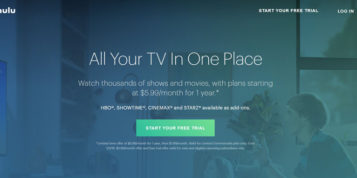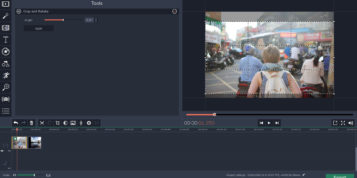A decade ago, we were on the edge of the dot com boom; the Internet was a new technology that had limited commercial use. Since then however things have changed. The Internet has had a drastic impact on culture and commerce. Its exponential growth in terms of adoption and speed has seen millions of people around the world begin viewing content; uploading, sharing and even shooting content themselves.
I have been in the industry for 14 years and have seen the focus shift from traditional advertising, to companies and brands jumping on this ‘video age’ bandwagon. Online video has become a new way for brands to meet business objectives; by targeting millions of people online with news stories, events and quite frankly any piece of information companies wish to share.
The fact is there are millions of different video’s online. Interestingly, there has been another shift recently. The focus of brands when deciding their video content has moved towards a more targeted approach, thus trying to bridge the corporate/consumer gap and personalise video content for the user’s specific platform. The goal is to turn online video into an effective tool for brand engagement and awareness.
I think when creating online video, you should keep four simple rules in mind. Online video has to be something that people want to watch, unlike TV ads audiences choose the content they watch and if they’re not interested they’ll walk away. Users want to be entertained, and it is a medium that allows brands to be more engaging, therefore you must ‘Always think of the audience’. Online, as opposed to traditional advertising allows you to measure right down to demographics and geographics of your targeted audience. By extending your reach, brands are able to measure their effect and ensure their videos are placed in front of the right people. For example it is no good selling sports products to users of Mumsnet – it just wouldn’t work!
When creating video content you should always lead with the product. When it comes to buying we’re all pretty visual, we want to be able to look at a product before we buy. Apple is a master of this; rather than trading on the lifestyle you could lead, Apple just shows the product and what is great about it. People want reassurance that a product does what it says on the tin. A great example of a product led, albeit bizarre, online video is the ‘Will it Blend’ video, from Blendtec. They have had over one hundred million hits just by blending strange things. This goes back to my earlier point, that an online video should engage with your audience and provide a form of entertainment.
Talent works. Today’s popular culture and celebrity brand advocates are often used hand-in-hand to create customer engagement. The leading sport brands Nike and Adidas know this only too well and have created online video’s that have generated millions of views primarily off the back of personalities like David Beckham and Snoop Dog.
If your brand doesn’t have a bucket full of cash and can’t quite stretch to the likes of Beckham, I don’t actually think it matters. From what I have seen over the years, from the very beginning working at Google to now heading up social media at Duke & Earl, is that there really is no scientific approach to what creates a massive buzz around a video. Take Cassette Boy for example. They recycle content in a new and creative way, it’s always done with humour and they possess ‘a cool’ brands would love. Cool we know is something usually spontaneous and often difficult to identify – but great for brands to be partnered up or associated with none-the-less.
Essentially, there are no rules. Every time you think there are guidelines for what will work, something different ‘goes viral’. Take the example, although not brand related, of Charlie bit my finger which has seen just shy of half a billion views! It makes no sense at all! Old Spice is another example, it just shouldn’t work; it’s a spray that old men wear and it stinks to high heaven, but, they took a chance and the digital ads were the most watched videos of 2010 and 2011.
The trick for brands is to communicate rather than shout at their audience, there is so much for me to look at on the Internet, why should I view your video? Keep it targeted, tell me about your product and entertain me – surely not much to ask? Then again, this isn’t guaranteed to work! Good luck with that one!






